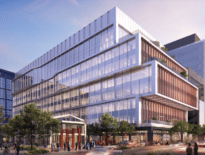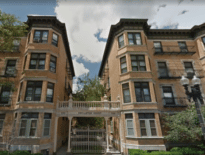A new report from the National Multifamily Housing Council, a major nationwide for-profit housing developer trade group, hints at the costs created by the kind of strident local opposition that’s bedeviled new apartment and condominium projects across Massachusetts.
That figure? An average 5.6 percent increase in the project’s cost and an average 7.4-month extension of the development timeline.
The extra money is spent on everything from defending against lawsuits to assembling political support for each new building, the NMHC report says.
The data was embedded in the results from an NMHC survey of its members and members of the National Association of Home Builders that aimed to quantify the costs of different kinds of building and development regulations.
Responses from a total of 49 developers of varying size – just over half typically build projects between 150 and 349 units, with another 19 percent building between 50 to 149 units at a time – were usable enough to be included in the report. The average development cost for a respondent’s typical project was $56.6 million, with the greatest concentration being between $50 million and $99 million. Eight of the respondents build projects in New England, although many developers who took part build in multiple regions of the country.
The survey showed the biggest cost driver was changes to the building code over the last 10 years, which NMHC said have boosted project costs by 11.1 percent on average. The next-biggest driver were common local development fees, like Boston’s linkage fee system or other local impact fees, at 8.7 percent of a project’s cost on average when a locality requires them. Other major cost drivers included affordability mandates like inclusionary zoning (6.9 percent of project costs when present). A fact sheet issued alongside the report also claimed developers facing these mandates boosted rent on market-rate units an average of 7.6 percent to make up for the added expense.
Almost half of respondents said they do not propose projects in areas that have inclusionary zoning requirements, and 87.5 percent said they avoid working in jurisdictions with rent control. Boston and several other Massachusetts municipalities are likely to push for rent control provisions next year. Gubernatorial front-runner Maura Healey has signaled her support for these policies.
Other costs identified in the survey included local energy-efficiency requirements or facade design mandates (5.8 percent of project costs when present), open space requirements (4.7 percent when present) that generate costs by preventing some development from occurring and the cost of rezoning a parcel to enable development (3.4 percent when present).
“The U.S. is facing a serious housing affordability crisis, in part, because of this overly burdensome regulatory environment,” NMHC President Doug Bibby, NMHC said in a statement. “We need to do all we can to lower the cost of housing, and that should start with eliminating duplicative and unnecessary regulations. Those extra costs make many projects financially unviable given that housing providers are already dealing with sky-high land, materials and labor costs.”




 |
| 


